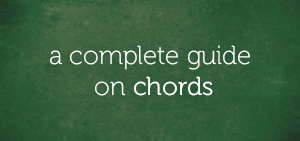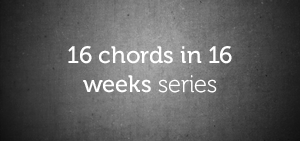If you’re interested in learning smarter ways to create passing chords, then this lesson is for you.
The role of passing chords in harmony and chord progressions cannot be over-emphasized; especially in the aspect of creating tension, and adding activity to chord progressions.
This lesson will reveal another smart way that passing chords can be formed to major and minor chords. All I need is your undivided attention for the next 10 minutes or so.
Let’s get started by reviewing the concept of passing chords.
A Quick Review On Passing Chords
Passing chords are chromatic chords that are used to connect two diatonic chords.
Before we proceed, permit me to define the terms diatonic and chromatic for you. A diatonic chord is a chord of the prevalent key while a chromatic chord is a chord that is foreign to the prevalent key.
In the key of C major:
…the C major seventh:
…and D minor seventh:
…are diatonic chords because they consist of notes in the key of C major.
These two diatonic chords can be connected with the A dominant seventh chord:
…which is a chromatic chord.
The A dominant seventh chord is a chromatic chord because it is foreign to the prevalent key (which is the key of C major):
…because there’s a C# tone in the A dominant seventh chord that is foreign to the key of C major.
Application Of The Passing Chord
Let’s quickly demonstrate the application of passing chords in the gospel song I surrender all.
Example #1 – Without a passing chord
I surrender (C major seventh):
all (D minor seventh):
Example #2 – With a passing chord
I sur (C major seventh):
…render (A dominant seventh):
all (D minor seventh):
The passing chord (A dominant seventh) was used to connect two diatonic chords (C major seventh and D minor seventh)
A Smarter Way To Form Passing Chords
Let’s quickly learn a smarter way to form a passing chord to major and minor chords respectively.
A Passing Chord For Major Chords
The smartest way to form a passing to any major chord is to go down a half-step below the root of the major chord and form a half-diminished seventh chord.
Let’s take two examples.
Example #1 – Passing chord for the C major seventh chord
The passing chord for the C major seventh chord:
…is a half-diminished seventh chord that is a half-step below the root of the C major seventh chord.
Now, a half-step below C:
…is B:
Therefore, the B half-diminished seventh chord:
…is a passing chord for the C major seventh chord:
Example #2 – Passing chord for the E major seventh chord
The passing chord for the E major seventh chord:
…is a half-diminished seventh chord that is a half-step below the root of the E major seventh chord.
A half-step below E:
…is D#:
Therefore, the D# half diminished seventh chord:
…is a passing chord for the E major seventh chord:
If you’re interested in learning more about half-diminished seventh chords, click here.
A Passing Chord For Minor Chords
Just like we did in major chords, you can go down a half-step below the root of any given minor chord and form a diminished seventh chord.
Let’s take two examples.
Example #1 – Passing chord for the C minor seventh chord
The passing chord for the C minor seventh chord:
…is a diminished seventh chord that is a half-step below the root of the C minor seventh chord.
Going down a half-step below C:
…takes you to B:
Therefore, the B diminished seventh chord:
…is a passing chord for the C minor seventh chord:
Example #2 – Passing chord for the G minor seventh chord
The passing chord for the G minor seventh chord:
…is a diminished seventh chord that is a half-step below the root of the G minor seventh chord.
A half-step below G:
…is F#:
Therefore, the F# half diminished seventh chord:
…is a passing chord for the G minor seventh chord:
Learn more about diminished seventh chords.
Final Words
The diminished and half-diminished seventh chords are easy to form and are always a half-step away from any minor and major chord respectively.
As long as you can recall these chords, I guarantee that you’ll not run out of passing chords.
See you in the next lesson.
Chuku Onyemachi
Latest posts by Chuku Onyemachi (see all)
- The Formation Of Diminished Seventh Chords Used To Be Challenging Until I Did This
- How To Form Seventh Chords In Two Shakes Of A Dog’s Tail Using Third Intervals And The Circle Of Fifths Chart
- I Played The 13sus4 Chord And This Happened…
- How To Build Seventh Chords Like An Architect Using “Foundation And Structure” Concept
- This 4-Week Plan Will Help You Master All The Major Scales







Comments on this entry are closed.